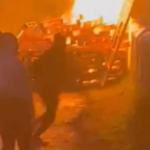Why nuclear power is NOT the alternative to fossil fuels
To drastically reduce global CO2 emissions the first steps that must be taken is to bring to an end the largest producer of these CO2 emissions, the fossil fuel industry and the power plants that use fossil fuels as a means of generating electrical power. Advocates of nuclear power would say that nuclear power is clean and does not produce any CO2 in the generation of electrical power. While that aspect maybe true, it completely ignores the CO2 emissions generated from the mining, refining, enrichment, and transportation of uranium. That is to say nothing of the other potentially catastrophic dangers of nuclear power. As harmful as fossil fuels are to the environment, this pales into insignificance when compared to potentially permanent damage done to the environment from an accident or catastrophic failure at a nuclear power plant. The most vivid examples of these kinds of accidents are Fukushima in 2011 and Chernobyl in 1986. But there have been many more.In figure 3 below are listed some of the most devastating nuclear accidents since records began. (4)
*Terms*
- INES Scale -International Nuclear Event Scale
- Millisievert – AMillisievert (mSv) isthe average accumulated background radiation dose to a person overa single year


The INES scale is a logarithmic scale. In simple language this means that each increase on the scale along the X axis represents an accident that is 10 times greater in severity than the previous accident. Fukushima and Chernobyl received a 7 on the INES scale, the highest classification on the scale. Ratings between 4 and 7 represent an accident with localised contamination and a major accident, respectively. A lethal dose of radioactive radiation among humans is 7,000 millisievert. The reactors in Chernobyl still emit radiation measuring 6,000 millisievert. The UN estimates that the average individual receives an annual average dose of about 2.4 millisievert.(5)
A wholesale replacement of fossil-fuels by nuclear power would mean building many thousands of potential Chernobyl’s and Fukushima’s all round the world. The likelihood of nuclear disasters would become overwhelming.












